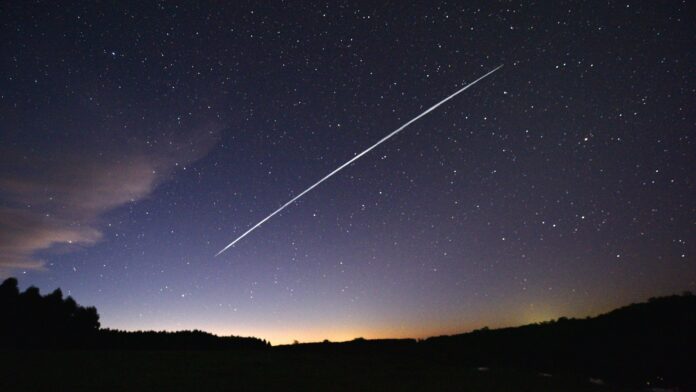Astronomers have discovered evidence that orbiting Starlink satellites can contaminate their observations and appear as binary stars.
Earlier this month, a group of astronomers published a preprint paper about “satellite contamination” of spectroscopic observations taken with LAMOST(Opens in a new window), a large telescope in China.
Unlike a traditional telescope, LAMOST can take a spectroscopy(Opens in a new window) of the night sky outside the visible light spectrum, enabling it to view the universe through other bands of electromagnetic radiation. The technique is particularly useful at identifying(Opens in a new window) binary stars, or solar systems with two suns.
Past surveys of LAMOST data have revealed the presence of many “spectroscopic” binary star candidates, the paper(Opens in a new window) says. But further investigation has found that some of the binary stars appear to be “false positives” after looking at repeated observations.
Paper Satellite contamination of LAMOST-MRS spectra from Mikhail Kovalev and others.
The astronomers then looked at the cause and suspect Starlink satellites launched in February 2022 may have been the culprit behind the false positives. As the satellites flew into orbit, they also began reflecting sunlight, which can be visible from Earth around twilight hours.
That said, the astronomers weren’t able to confirm the Starlink satellites crossed the telescope’s field of view, although the paper says exact positioning data on orbiting satellites can be “notoriously not very accurate.”
“Using the skyfield(Opens in a new window) package, the visibility of the (Starlink) satellite was verified, from LAMOST for the time of the observations,” the paper added. “Therefore, we suggest that the observations have been ‘photobombed’ by a train of Starlink satellites on their low, parking orbit.”
Astronomer Jonathan McDowell, who tracks Starlink satellites, tweeted(Opens in a new window) about the research on Wednesday. “Oh brilliant. Think you’ve discovered a binary star using spectroscopy? Guess again, the second component is just reflected light from a Starlink sat,” he said.
The finding arrives as astronomers are growing more concerned about Starlink and other low-Earth satellites interfering with their observations. SpaceX and its rivals plan on launching thousands of additional satellites into orbit in the coming years, which some fear could increase light pollution in the night skies. But in response, SpaceX has been working with scientists to prevent its own satellites from reflecting too much sunlight. This includes implementing design changes to the satellites themselves.
Recommended by Our Editors
Meanwhile, the astronomers’ paper warns colleagues to be on guard against false positives from orbiting satellites. The good news is that the probability of a group of newly launched satellites crossing into a telescope’s field of view is relatively low.
“As usual, it is important to note that once the sun dips far enough under the horizon, most of the satellites fall in the shadow of the Earth. This problem is therefore only critical during the first and last hours of the night,” the paper added. But if companies decide to launch even more satellites into space at a regular cadence, then the risk of interference could increase.
“It is therefore important that the satellite operators also keep the brightness of the satellites to the absolute minimum possible during their stay on-transit orbit,” the paper added.
Get Our Best Stories!
Sign up for What’s New Now to get our top stories delivered to your inbox every morning.
This newsletter may contain advertising, deals, or affiliate links. Subscribing to a newsletter indicates your consent to our Terms of Use and Privacy Policy. You may unsubscribe from the newsletters at any time.
Hits: 0














